Isothermal titration calorimetry (ITC) is a technique that can quantitatively measure the interaction between molecules, often proteins, in terms of binding affinity (KD), change in enthalpy (ΔH) and reaction stoichiometry (n). This is done by measuring the heat either released or absorbed when titrating a ligand into the sample solution. Titration is made stepwise in small aliquots of the ligand, and the corresponding heat is measured for each step. The instruments are very sensitive; heats below 1 microcalorie can be detected. The direct output is the thermal power applied by a feedback system in order to keep the temperatures of both cells (sample and reference) as close as possible, despite any perturbation (e.g., complex formation) taking place upon each ligand addition, giving rise to the thermogram. For each step in the titration sequence the molar ratio (ratio of reactant concentrations within the sample cell) of the ligand and sample changes until the sample approaches saturation. The resulting curve of the heat (typically kcal/mol ligand) vs the ligand:sample molar ratio is called the binding isotherm. The affinity (KD), enthalpy change (ΔH), and the stoichiometry (n) are estimated by non-linear regression using an appropriate binding model.
What are the sample requirements?
- Sample volume needed depends on instrument, ranging from about 300 μL up to 2 mL
- Likewise, ligand volume needed ranges from 60 μL to 500 μL
- Sample concentration is in the range 10-100 µM and the ligand concentration is typically 10x higher.
- The measurable binding affinity range also depends on instrument and is in the order of nM to mM.
What other specific considerations are relevant?
- Protein aggregates will interfere with ITC: Centrifuge or filter samples before use
- The two binding partners must be in identical buffers to minimize the background injection heats that can mask heats of binding.
- Avoid large concentration of solubilizing agents (e.g., glycerol, DMSO) and reducing agents (e.g., DTT, TCEP).
- For more instruments specific sample requirements, see the “Sample requirements and further technical details” page for the prospective TNA site linked from the bottom of each TNA partner page.
Partners offering this technique
MOSBRI reference partner sites for this technique:
Other partners:
